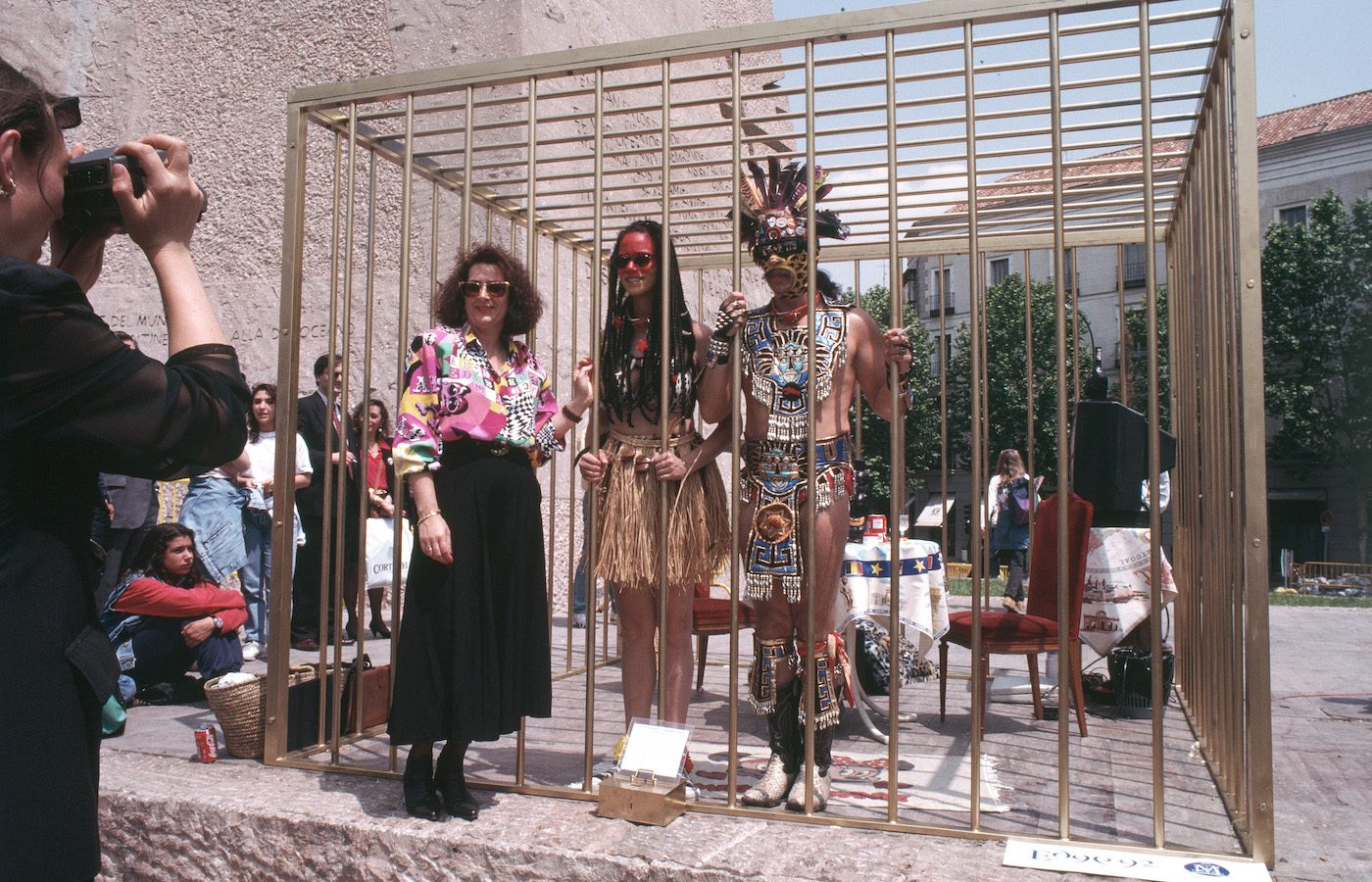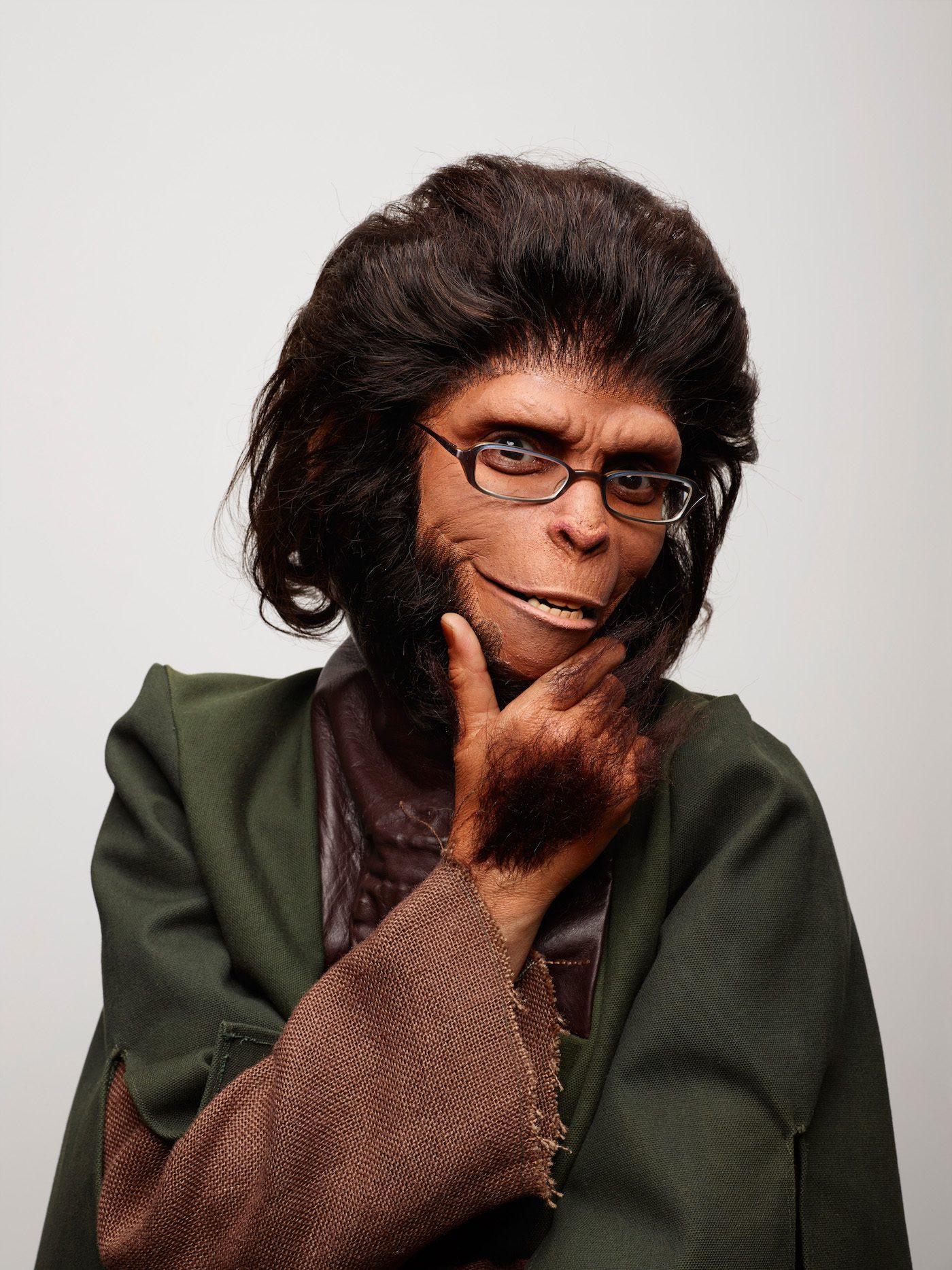Prior to her retrospective at KW Institute for Contemporary Art, Berlin, the artist discusses the choices behind key works in her oeuvre.

Coco Fusco and Guillermo Gómez-Peña, Two Undiscovered Amerindians Visit the West, 1992. Photo: Nancy Lytle
Contemporary And: How has your performance The Couple in the Cage (1993) influenced your work since then?
Coco Fusco: The Couple in the Cage is the title of the video about the performance. The actual performance was entitled Two Undiscovered Amerindians Visit the West and based on the once popular European and North American practice of exhibiting Indigenous people from Africa, Asia, and the Americas in zoos, parks, taverns, museums, freak shows, and circuses. While this tradition reached the height of its popularity in the nineteenth century, it was actually started by Christopher Columbus, who returned from his first voyage [to the Americas] in 1493 with several Arawak, one of whom was left on display at the Spanish Court for two years. Our original intent, with my collaborator Guillermo Gómez-Peñia, was to create a satirical commentary on Western concepts of the exotic, primitive Other, but we had to confront two unexpected realities in the course of developing this piece: a substantial portion of the public believed that our fictional identities were real ones, and a substantial number of intellectuals, artists, and cultural bureaucrats sought to deflect attention from the substance of our experiment to the “moral implications” of our dissimulation, or in their words, our “misinforming the public” about who we were. The literalism implicit in the interpretation of our work by individuals representing the “public interest” bespoke their investment in positivist notions of truth and depoliticized, ahistorical notions of civilization.
The project has marked me professionally in that it is the work that most people have heard of and question me about. The research I did for it opened up a line of investigation that I continued with some of my later performances, and also with the exhibition Only Skin Deep: Changing Visions of the American Self (2004) that I curated for the International Center for Photography. The exhibition’s aim was to challenge assumptions about the United States’ identity through the continuous unfixed concepts of race, nation, and the self.
C&: What made you select a poem by Cesare Pavese to accompany the video Your Eyes Will Be an Empty Word (2021)? How did you manage to create a labor of love despite the haunting and grieving space of New York’s Hart Island?
CF: The Pavese poem is about death. The poet speaks of death as if it were personified – “death as a face….” I had been conducting research into the representations of epidemics and plagues in art and found many examples in which death was depicted allegorically as a being that rises above a landscape strewn with corpses. I chose to use a drone camera to get a bird’s-eye view of the mass grave at Hart Island in order to revisit that way of representing death.
The gesture of tossing flowers into the sea is a way of memorializing the dead that takes place in many Spanish-speaking countries, including Cuba. I chose to toss flowers into the sea in homage to those buried at Hart Island, and also because I remembered that Maria Teresa Hincapié had worked with flowers in some of her performances.
C&: Can you talk about your movie La Noche Eterna (The Eternal Night, 2023) and how you decided to tell the story of Néstor Díaz de Villegas?
CF: I knew Néstor and I know a bit about his prison experience. He is a well-known Cuban writer and cultural commentator. We met in Cuba in 2016 – I have been working on a series of videos about conflicts between Cuban artists and the state since 2015. I had already made videos about Heberto Padilla, María Elena Cruz Varela, Juan Sí González and Reinaldo Arenas. But The Eternal Night is longer than the other videos and involves more elaborate dramatization, which I was able to do because I had a larger budget.

Coco Fusco, Observation of Predation in Humans: A Lecture by Dr. Zira, Animal Psychologist. 2013-2016. Photo courtesy of The Walker Art Center
C&: Can you talk about your upcoming exhibition Tomorrow, I will become an Island at KW Institute for Contemporary Art, Berlin? What does the title refer to?
CF: The show will feature a broad selection of my videos, photography, texts, installations, and live performances from the 1990s to the present, covering themes of racial representation, feminism, postcolonial theory, institutional critique, military interrogation, and post-revolutionary Cuba. I have an ongoing relationship with the city of Berlin, where I have participated in performances and lectures at multiple venues. And on the occasion of this retrospective, I will present a new monologue performance with a premiere at Sophiensaele in December.
The title of the show comes from a poem by Cuban poet Virgilio Piñera entitled Isla (Island). This is a rough translation.
Although I am about to be reborn, I will not proclaim it to the four winds, nor will I feel myself to be a chosen one:
it was only my lot, and I accept it because it is not in my power to refuse, and it would be a discourtesy that a distinguished man would never do.
It has been announced to me that tomorrow, at six minutes past seven in the evening, I shall become an island, an island as islands usually are.
My legs will become land and sea, and little by little, like a Chopinian andante, I will begin to grow trees in my arms, roses in my eyes and sand in my chest.
In my mouth the words will die so that the wind can howl at their desire.
Then, lying down as the islands usually do, I will stare at the horizon, I will see the sun rise, the moon, and far from restlessness, I will say very quietly: so it was true?
C&: What made you choose this poem?
CF: Piñera is one of the greatest Cuban writers of the twentieth century and was censored for many years by the revolutionary government. He is widely read and quoted in the Spanish-speaking world and is known among Cubans for his poetic evocations of life on an island as a kind of confinement.
Coco Fusco: Tomorrow, I will become an Island will be on view at KW Institute for Contemporary Art in Berlin from 14 September 2023 to 7 January 2024.
Julie Abricot is a Franco-Caribbean teacher and illustrator. She has a degree in art history and is finishing her MA in American studies with a focus on Diasporic aesthetics.
"AUF DEUTSCH"
More Editorial